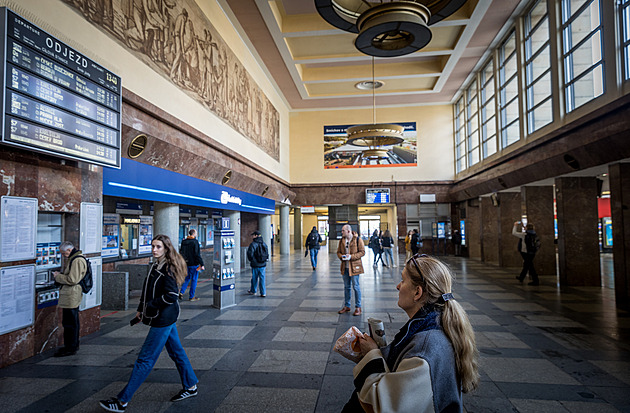How Technology Supports Construction Compliance of Steel Buildings
Construction projects today must adhere to a range of stringent compliance standards. These standards ensure safety, efficiency, and durability in structures. Technology is playing an increasingly significant role in streamlining the compliance process, offering tools that simplify adherence to regulations like the AISC 360, a crucial standard for steel buildings. In this article, we explore […] The post How Technology Supports Construction Compliance of Steel Buildings appeared first on Entrepreneurship Life.


Construction projects today must adhere to a range of stringent compliance standards.
These standards ensure safety, efficiency, and durability in structures. Technology is playing an increasingly significant role in streamlining the compliance process, offering tools that simplify adherence to regulations like the AISC 360, a crucial standard for steel buildings.
In this article, we explore how technology aids construction compliance, focusing on tools, software, and best practices that enhance adherence to steel building standards like AISC 360.
What Is Construction Compliance?
Construction compliance refers to meeting legal, safety, and technical standards in building projects. These standards ensure that structures are safe for occupants and meet regional, national, or international regulations. Common compliance benchmarks include:
- Structural integrity – Ensuring the building can withstand loads and stresses.
- Safety codes – Adhering to fire safety, accessibility, and other safety requirements.
- Material standards – Using materials that meet specified quality.
One widely recognized standard in steel construction is the AISC 360. The AISC 360 standard, also known as the “Specification for Structural Steel Buildings,” establishes guidelines for the design, fabrication, and erection of structural steel buildings. Adherence to this standard is vital because it ensures that steel structures are safe, durable, and perform as intended under various load conditions, such as wind, seismic forces, and operational stresses.
These standards address the minimum requirements for quality control (QC), quality assurance (QA), and nondestructive examination (NDE) of structural steel systems and composite elements. Adhering to these requirements ensures that potential defects in materials or construction processes are identified and rectified early, reducing the risk of structural failure.
The Role of Technology in Steel Building Standards Compliance
Modern technology simplifies compliance in steel construction by integrating tools that focus specifically on standards like AISC 360. Digital solutions help automate calculations, verify designs, and document adherence. Below are some key technological advancements:
1. Building Information Modeling (BIM)
Building Information Modeling (BIM) is a revolutionary technology in the construction industry. BIM allows for the creation of detailed 3D models of steel buildings, which include all structural elements and their specifications. This technology helps in identifying potential issues early in the design phase, ensuring compliance with AISC 360 standards.
According to the Federal Highway Administration, BIM adoption can reduce project errors by up to 40%, significantly enhancing compliance.
2. Compliance Management Software
Structural analysis software, such as SDC Verifier, plays a vital role in ensuring compliance with AISC 360. These tools allow engineers to simulate and analyze the behavior of steel structures under various loads and conditions. By using such software, engineers can verify that their designs meet the required standards and make necessary adjustments before construction begins.
Namely, SDC Verifier goes beyond basic structural analysis by directly implementing several key AISC standards, including AISC ASD 1989, AISC 360-10, and AISC 360-22. This integration enables engineers to perform comprehensive code checks for members, bolts, and T-shaped geometries.
3. Drones for Site Inspections
Drones and laser scanning technology are increasingly used in the construction industry for site surveys and inspections. These technologies provide accurate and detailed data about the construction site and the steel structure. During the building stage, drones provide a number of advantages, including increased safety, increased productivity, and lower expenses.
4. Cloud-Based Collaboration Platforms
Cloud platforms allow teams to share compliance data in real-time, crucial for projects involving steel construction. Features include:
- Document storage for standards like AISC 360.
- Progress tracking for steel member installation.
- Instant updates to compliance reports.
Benefits of Technology in Meeting AISC 360 Standards
Embracing technology offers numerous benefits for compliance with AISC 360 and other steel building standards:
1. Increased Accuracy
Compliance management software automates calculations related to steel member strength, buckling, and stability, reducing human error.
2. Time Savings
By automating checks and inspections specific to AISC 360 requirements, teams save time and focus on high-priority tasks.
3. Enhanced Transparency
Technologies like compliance software ensure all stakeholders have access to up-to-date compliance information for steel structures.
Best Practices for Using Technology in Steel Building Compliance
- Train Teams on New Tools – Ensure all staff know how to use BIM, drones, and compliance software tailored for AISC 360.
- Stay Updated on AISC 360 – Regularly review updates to the standard and incorporate them into designs.
- Document Everything – Use cloud platforms to store compliance records specific to steel construction.
Common Questions About Steel Building Compliance and Technology
1. How Do Software Tools Verify AISC 360 Compliance?
Compliance software cross-references design data with regulations outlined in AISC 360. This process includes automated calculations for structural integrity, member stability, and load-bearing capacity.
2. What Are the Core Areas of AISC 360?
Key areas include:
- Load resistance and stability of steel members.
- Material specifications for steel components.
- Connection design and detailing.
Conclusion
Technology has revolutionized steel building compliance by enhancing accuracy, reducing errors, and streamlining processes. With tools like compliance software, adhering to standards like AISC 360 is simpler and more efficient. By integrating these solutions, engineers can ensure structural safety, save time, and meet regulatory requirements with confidence.
The post How Technology Supports Construction Compliance of Steel Buildings appeared first on Entrepreneurship Life.
What's Your Reaction?



















































